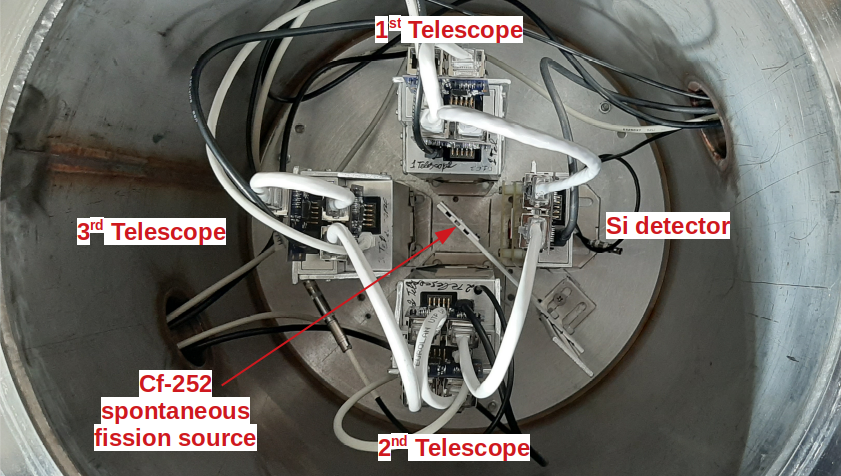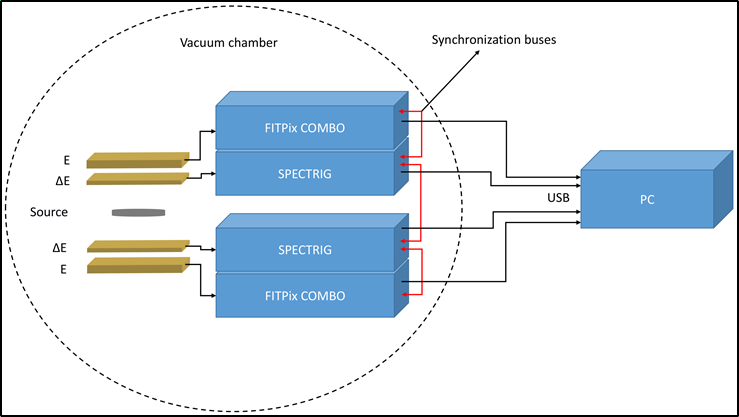"Investigation of rare fission mode processes using silicon pixel detectors Timepix"
Ahmadov G. S., Holik M., Kopatch Y. N., Berikov D. et al.
Rare fission modes (ternary and quaternary fission), in which light charged particles are emitted, are the subject of intensive experimental and theoretical studies, since these studies can be attributed to one of the main sources of information on the mechanism of nuclear fission. To study these processes, an experimental setup was assembled (figure), consisting of three semiconductor telescopes ∆E-E and a silicon detector. Thin detectors with an area of 10 × 10 mm2 and a thickness of 15 and 140 μm were used to measure ∆E, and Timepix silicon pixel detectors with an area of 14 × 14 mm2 and a thickness of 300 and 600 μm were used to measure E. A special synchronization bus has been developed and integrated into the FITPix COMBO. It can be used as a Timepix (including receiving pulses from the back side) or as a simple spectrometric device - Spectrig (when connected to an external detector such as an ∆E detector). The synchronization bus has also been designed to handle trigger and busy signals to effectively filter out unpaired events when performing coincidence measurements. Test measurements were carried out with a 226Ra alpha and 252Cf spontaneous fission source and the results of these measurements are presented.


You can connect to the online meeting of the DNP Seminar by the link
Meeting number: 137 242 2103
Password: 3mkDCUwwM38


